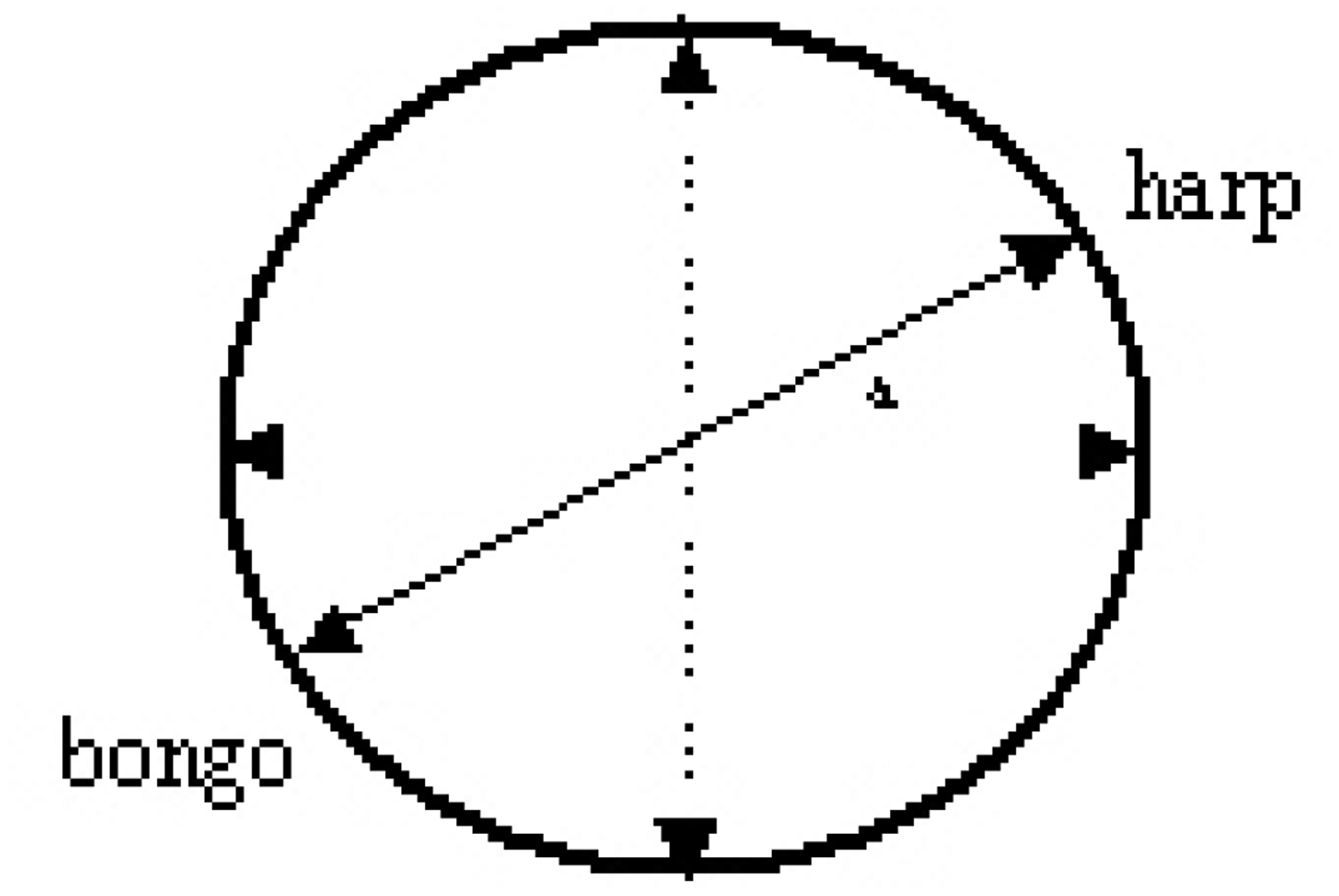Figure 1:

Schematic of one of sixteen possible angles (a) in which the mouse was supposed to be moved. When, for example, the mouse was moved in a 30 degrees angle to the upper right, harp sounds were produced. When the mouse was moved in a 210 degrees angle to the lower left, bongo sounds were produced. Participants had to figure out the correct angle by trial and error with the aids of auditory feedback.
